Hanlin Wang
The World is Your Canvas: Painting Promptable Events with Reference Images, Trajectories, and Text
Dec 18, 2025


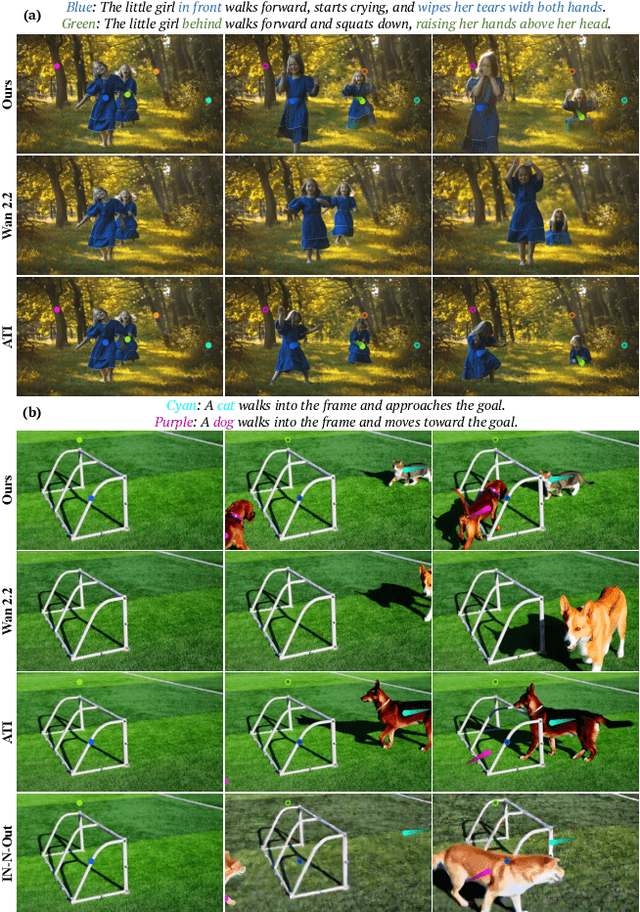
Abstract:We present WorldCanvas, a framework for promptable world events that enables rich, user-directed simulation by combining text, trajectories, and reference images. Unlike text-only approaches and existing trajectory-controlled image-to-video methods, our multimodal approach combines trajectories -- encoding motion, timing, and visibility -- with natural language for semantic intent and reference images for visual grounding of object identity, enabling the generation of coherent, controllable events that include multi-agent interactions, object entry/exit, reference-guided appearance and counterintuitive events. The resulting videos demonstrate not only temporal coherence but also emergent consistency, preserving object identity and scene despite temporary disappearance. By supporting expressive world events generation, WorldCanvas advances world models from passive predictors to interactive, user-shaped simulators. Our project page is available at: https://worldcanvas.github.io/.
HoloCine: Holistic Generation of Cinematic Multi-Shot Long Video Narratives
Oct 23, 2025Abstract:State-of-the-art text-to-video models excel at generating isolated clips but fall short of creating the coherent, multi-shot narratives, which are the essence of storytelling. We bridge this "narrative gap" with HoloCine, a model that generates entire scenes holistically to ensure global consistency from the first shot to the last. Our architecture achieves precise directorial control through a Window Cross-Attention mechanism that localizes text prompts to specific shots, while a Sparse Inter-Shot Self-Attention pattern (dense within shots but sparse between them) ensures the efficiency required for minute-scale generation. Beyond setting a new state-of-the-art in narrative coherence, HoloCine develops remarkable emergent abilities: a persistent memory for characters and scenes, and an intuitive grasp of cinematic techniques. Our work marks a pivotal shift from clip synthesis towards automated filmmaking, making end-to-end cinematic creation a tangible future. Our code is available at: https://holo-cine.github.io/.
SPA-RL: Reinforcing LLM Agents via Stepwise Progress Attribution
May 27, 2025
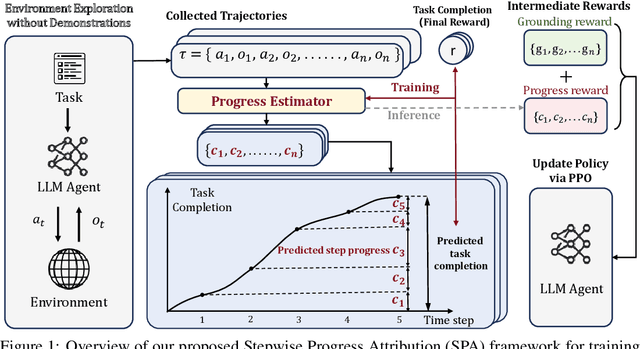


Abstract:Reinforcement learning (RL) holds significant promise for training LLM agents to handle complex, goal-oriented tasks that require multi-step interactions with external environments. However, a critical challenge when applying RL to these agentic tasks arises from delayed rewards: feedback signals are typically available only after the entire task is completed. This makes it non-trivial to assign delayed rewards to earlier actions, providing insufficient guidance regarding environmental constraints and hindering agent training. In this work, we draw on the insight that the ultimate completion of a task emerges from the cumulative progress an agent makes across individual steps. We propose Stepwise Progress Attribution (SPA), a general reward redistribution framework that decomposes the final reward into stepwise contributions, each reflecting its incremental progress toward overall task completion. To achieve this, we train a progress estimator that accumulates stepwise contributions over a trajectory to match the task completion. During policy optimization, we combine the estimated per-step contribution with a grounding signal for actions executed in the environment as the fine-grained, intermediate reward for effective agent training. Extensive experiments on common agent benchmarks (including Webshop, ALFWorld, and VirtualHome) demonstrate that SPA consistently outperforms the state-of-the-art method in both success rate (+2.5\% on average) and grounding accuracy (+1.9\% on average). Further analyses demonstrate that our method remarkably provides more effective intermediate rewards for RL training. Our code is available at https://github.com/WangHanLinHenry/SPA-RL-Agent.
GGBond: Growing Graph-Based AI-Agent Society for Socially-Aware Recommender Simulation
May 27, 2025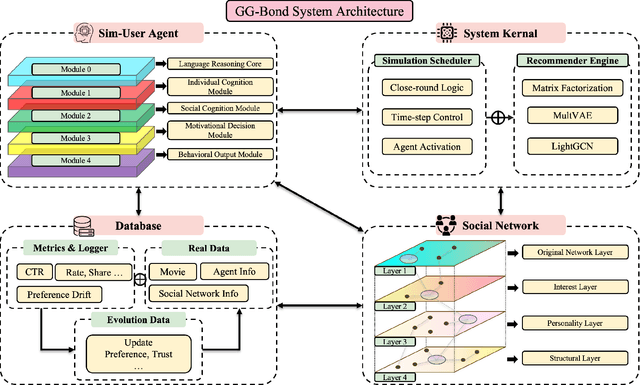
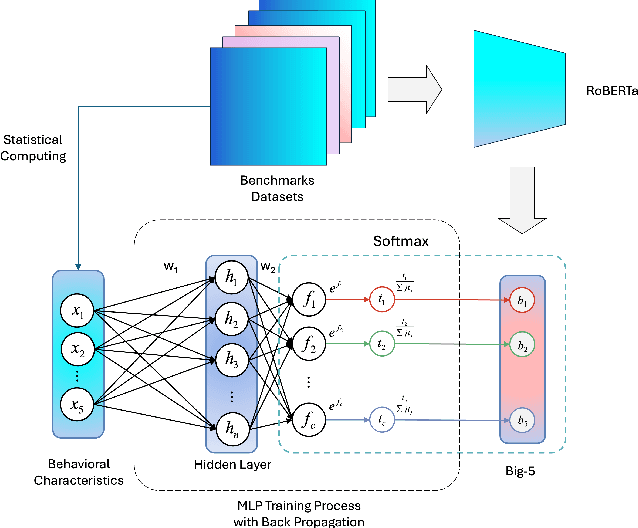
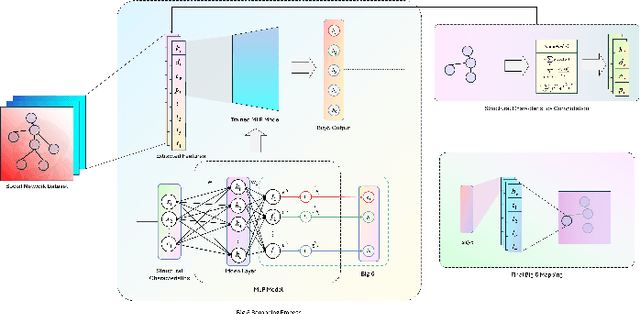
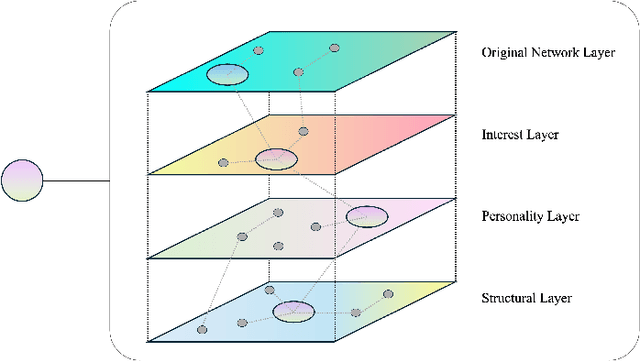
Abstract:Current personalized recommender systems predominantly rely on static offline data for algorithm design and evaluation, significantly limiting their ability to capture long-term user preference evolution and social influence dynamics in real-world scenarios. To address this fundamental challenge, we propose a high-fidelity social simulation platform integrating human-like cognitive agents and dynamic social interactions to realistically simulate user behavior evolution under recommendation interventions. Specifically, the system comprises a population of Sim-User Agents, each equipped with a five-layer cognitive architecture that encapsulates key psychological mechanisms, including episodic memory, affective state transitions, adaptive preference learning, and dynamic trust-risk assessments. In particular, we innovatively introduce the Intimacy--Curiosity--Reciprocity--Risk (ICR2) motivational engine grounded in psychological and sociological theories, enabling more realistic user decision-making processes. Furthermore, we construct a multilayer heterogeneous social graph (GGBond Graph) supporting dynamic relational evolution, effectively modeling users' evolving social ties and trust dynamics based on interest similarity, personality alignment, and structural homophily. During system operation, agents autonomously respond to recommendations generated by typical recommender algorithms (e.g., Matrix Factorization, MultVAE, LightGCN), deciding whether to consume, rate, and share content while dynamically updating their internal states and social connections, thereby forming a stable, multi-round feedback loop. This innovative design transcends the limitations of traditional static datasets, providing a controlled, observable environment for evaluating long-term recommender effects.
Reasoning Beyond Language: A Comprehensive Survey on Latent Chain-of-Thought Reasoning
May 22, 2025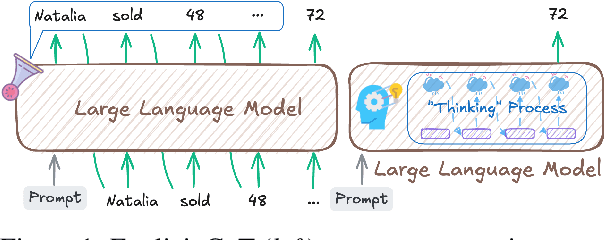
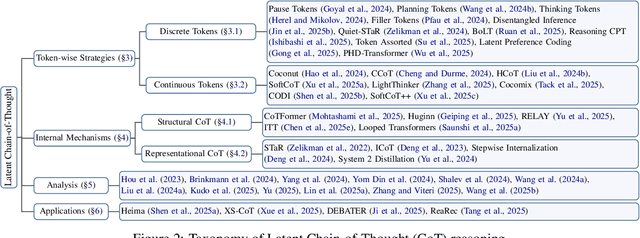
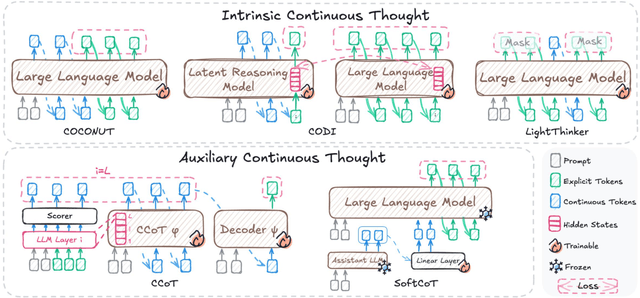
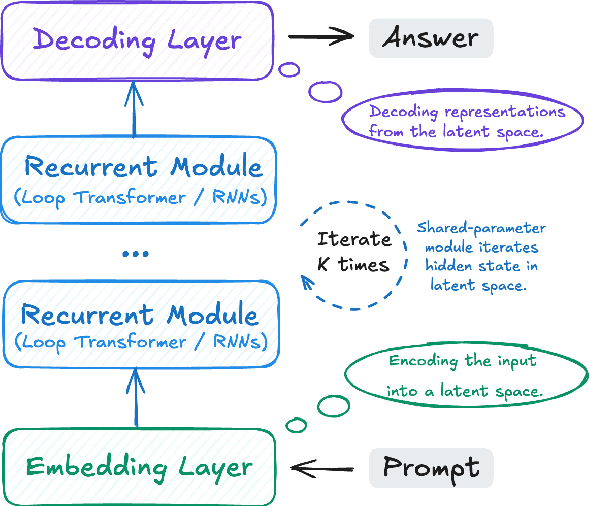
Abstract:Large Language Models (LLMs) have achieved impressive performance on complex reasoning tasks with Chain-of-Thought (CoT) prompting. However, conventional CoT relies on reasoning steps explicitly verbalized in natural language, introducing inefficiencies and limiting its applicability to abstract reasoning. To address this, there has been growing research interest in latent CoT reasoning, where inference occurs within latent spaces. By decoupling reasoning from language, latent reasoning promises richer cognitive representations and more flexible, faster inference. Researchers have explored various directions in this promising field, including training methodologies, structural innovations, and internal reasoning mechanisms. This paper presents a comprehensive overview and analysis of this reasoning paradigm. We begin by proposing a unified taxonomy from four perspectives: token-wise strategies, internal mechanisms, analysis, and applications. We then provide in-depth discussions and comparative analyses of representative methods, highlighting their design patterns, strengths, and open challenges. We aim to provide a structured foundation for advancing this emerging direction in LLM reasoning. The relevant papers will be regularly updated at https://github.com/EIT-NLP/Awesome-Latent-CoT.
Kernel-Based Enhanced Oversampling Method for Imbalanced Classification
Apr 12, 2025Abstract:This paper introduces a novel oversampling technique designed to improve classification performance on imbalanced datasets. The proposed method enhances the traditional SMOTE algorithm by incorporating convex combination and kernel-based weighting to generate synthetic samples that better represent the minority class. Through experiments on multiple real-world datasets, we demonstrate that the new technique outperforms existing methods in terms of F1-score, G-mean, and AUC, providing a robust solution for handling imbalanced datasets in classification tasks.
STeCa: Step-level Trajectory Calibration for LLM Agent Learning
Feb 20, 2025Abstract:Large language model (LLM)-based agents have shown promise in tackling complex tasks by interacting dynamically with the environment. Existing work primarily focuses on behavior cloning from expert demonstrations and preference learning through exploratory trajectory sampling. However, these methods often struggle in long-horizon tasks, where suboptimal actions accumulate step by step, causing agents to deviate from correct task trajectories. To address this, we highlight the importance of timely calibration and the need to automatically construct calibration trajectories for training agents. We propose Step-Level Trajectory Calibration (STeCa), a novel framework for LLM agent learning. Specifically, STeCa identifies suboptimal actions through a step-level reward comparison during exploration. It constructs calibrated trajectories using LLM-driven reflection, enabling agents to learn from improved decision-making processes. These calibrated trajectories, together with successful trajectory data, are utilized for reinforced training. Extensive experiments demonstrate that STeCa significantly outperforms existing methods. Further analysis highlights that step-level calibration enables agents to complete tasks with greater robustness. Our code and data are available at https://github.com/WangHanLinHenry/STeCa.
Learning Human Skill Generators at Key-Step Levels
Feb 12, 2025Abstract:We are committed to learning human skill generators at key-step levels. The generation of skills is a challenging endeavor, but its successful implementation could greatly facilitate human skill learning and provide more experience for embodied intelligence. Although current video generation models can synthesis simple and atomic human operations, they struggle with human skills due to their complex procedure process. Human skills involve multi-step, long-duration actions and complex scene transitions, so the existing naive auto-regressive methods for synthesizing long videos cannot generate human skills. To address this, we propose a novel task, the Key-step Skill Generation (KS-Gen), aimed at reducing the complexity of generating human skill videos. Given the initial state and a skill description, the task is to generate video clips of key steps to complete the skill, rather than a full-length video. To support this task, we introduce a carefully curated dataset and define multiple evaluation metrics to assess performance. Considering the complexity of KS-Gen, we propose a new framework for this task. First, a multimodal large language model (MLLM) generates descriptions for key steps using retrieval argument. Subsequently, we use a Key-step Image Generator (KIG) to address the discontinuity between key steps in skill videos. Finally, a video generation model uses these descriptions and key-step images to generate video clips of the key steps with high temporal consistency. We offer a detailed analysis of the results, hoping to provide more insights on human skill generation. All models and data are available at https://github.com/MCG-NJU/KS-Gen.
LeviTor: 3D Trajectory Oriented Image-to-Video Synthesis
Dec 19, 2024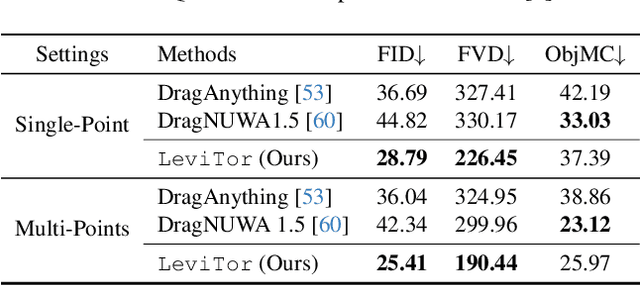
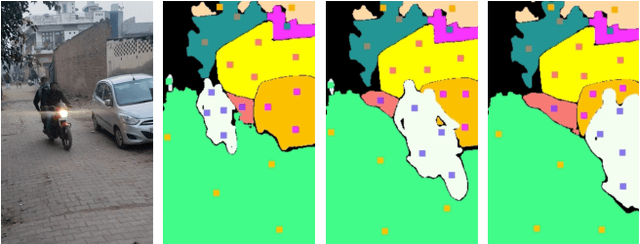
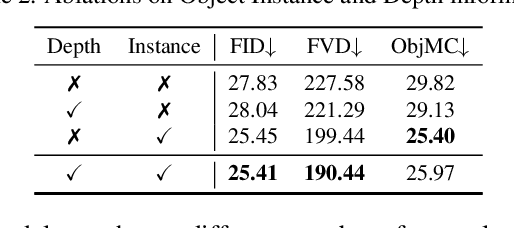
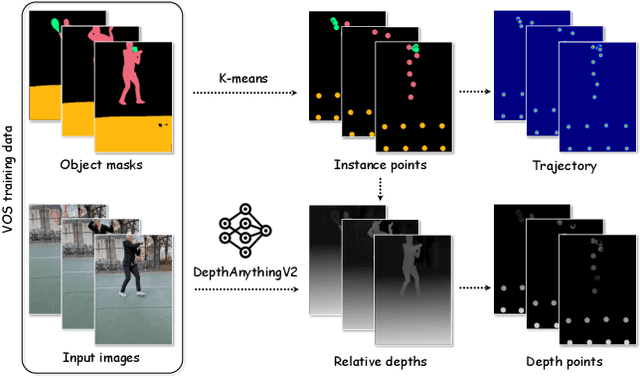
Abstract:The intuitive nature of drag-based interaction has led to its growing adoption for controlling object trajectories in image-to-video synthesis. Still, existing methods that perform dragging in the 2D space usually face ambiguity when handling out-of-plane movements. In this work, we augment the interaction with a new dimension, i.e., the depth dimension, such that users are allowed to assign a relative depth for each point on the trajectory. That way, our new interaction paradigm not only inherits the convenience from 2D dragging, but facilitates trajectory control in the 3D space, broadening the scope of creativity. We propose a pioneering method for 3D trajectory control in image-to-video synthesis by abstracting object masks into a few cluster points. These points, accompanied by the depth information and the instance information, are finally fed into a video diffusion model as the control signal. Extensive experiments validate the effectiveness of our approach, dubbed LeviTor, in precisely manipulating the object movements when producing photo-realistic videos from static images. Project page: https://ppetrichor.github.io/levitor.github.io/
AniDoc: Animation Creation Made Easier
Dec 18, 2024Abstract:The production of 2D animation follows an industry-standard workflow, encompassing four essential stages: character design, keyframe animation, in-betweening, and coloring. Our research focuses on reducing the labor costs in the above process by harnessing the potential of increasingly powerful generative AI. Using video diffusion models as the foundation, AniDoc emerges as a video line art colorization tool, which automatically converts sketch sequences into colored animations following the reference character specification. Our model exploits correspondence matching as an explicit guidance, yielding strong robustness to the variations (e.g., posture) between the reference character and each line art frame. In addition, our model could even automate the in-betweening process, such that users can easily create a temporally consistent animation by simply providing a character image as well as the start and end sketches. Our code is available at: https://yihao-meng.github.io/AniDoc_demo.
 Add to Chrome
Add to Chrome Add to Firefox
Add to Firefox Add to Edge
Add to Edge